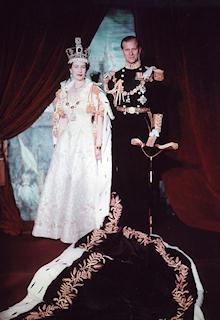British Kings and Queens
The history of Britain is tied up with its monarchy. Here at Activity Village we have a range of colouring pages, worksheets and printables to help you learn more about the Kings and Queen who have ruled Britain.
We've organised them by "house" because that's often the way we learn them. To search for a King or Queen alphabetically see our Famous People A-Z
In addition to what you can find here, we have a fabulous topic on The Tudors and another on the current British Royal Family to explore.
Anglo-Saxon Kings
- Harold Godwinson, Harold II (1066)
- More Coming Soon!
House of Normandy (1066 - 1154)
The Norman monarchs were named after the land in France (Normandy) of which they were Dukes. They claimed a right to the throne of England through their relationship to Edward the Confessor. Although the Pope recognised the right of the first Norman king, William I, to the throne, his landing in England and triumph at the Battle of Hastings is commonly referred to as the Norman Invasion and William is known as 'the Conqueror'.
- William the Conqueror (1066-1087)
- William II (1087-1100)
- Henry I (1100-1135)
- Stephen (1135-1154)
- Matilda (1141)
House of Plantaganet (1154 - 1485)
The 14 kings of the royal House of Plantaganet ruled England, and much of modern day France, for 331 years. The Plantaganets' dynasty included the Hundred Years' War and the civil War of the Roses, when the houses of Lancaster and York fought for the throne. The Plantaganets' reign included many other landmarks that we learn about in our history lessons, including the Magna Carta, the murder of Thomas Becket, the Black Death and the Peasants Revolt.
- Henry II (1154 -1189)
- Richard I - Richard the Lionheart (1189 - 1199)
- John (1199 - 1216)
- Henry III (1216 - 1272)
- Edward I (1272 - 1307)
- Edward II (1307 - 1327)
- Edward III (1327 - 1377)
- Richard II (1377 - 1399)
(House of Lancaster)
(House of York)
- Edward IV (1461 - 1470)
(House of Lancaster)
- Henry VI (1470 - 1471)
(House of York)
- Edward IV (1471 - 1483)
- Edward V (1483)
- Richard III (1483 - 1485)
House of Tudor (1485 - 1603)
The Tudors lasted only 3 generations yet their reign marked a time of monumental change for the country. This period was one of exploration, with many sea voyages setting out to discover new lands and explore the New World. It was also a time of social and religious upheaval across Europe. In this list of Tudor monarchs we've included the 'Nine Day Queen' Lady Jany Grey and the six wives of Henry VIII.
- Henry VII (1485 - 1509)
- Henry VIII (1509 - 1547)
- Edward VI (1547 - 1553)
- Lady Jane Grey (1553)
- Mary I (1553 - 1558)
- Elizabeth I (1558 - 1603)
House of Stuart (1603 - 1714)
The House of Stuart had ruled Scotland since 1371 but in 1603, on the death of Elizabeth I, James VI of Scotland also became James I of England, and the Stuarts ruled England too. Despite this the two countries did not officially unite for over 100 years.
The Stuart time was one of unrest, with religious reformation continuing across Europe and discord between Protestants and Catholics. The power of kings was also being tested and in the reign of the second Stuart king, Charles I, the King went to war with Parliament - the English Civil War. Charles I was defeated and executed! For a time England was a republic ruled by Oliver Cromwell, the leader of the Parlimentary forces. After the death of Cromwell and his son, Charles' son was invited back and the Stuarts returned to the throne until Anne died with no children.
- James I (1603 - 1625)
- Charles I (1625 - 1649)
- Charles II (1660 - 1685)
- James II (1685 - 1688)
- William III and Mary II (1689 - 1702)
- Anne (1702 - 1714)
House of Hanover (1714 - 1901)
The House of Hanover, also known as the Hanoverians, were a German royal dynasty. When Queen Anne died with no heir to the throne, her nearest Protestant relative (George I) was a member of the House of Hanover. Their dynasty continued until the death of Queen Victoria in 1902.
The Hanoverian period was relatively stable and peaceful. The rulers were long-lived and there were clear successions. Politically the country was more settled, and during the Hanoverian period the British Empire expanded and grew in importance and wealth.
- George I (1714 - 1727)
- George II (1727 - 1760)
- George III (1760 - 1820)
- George IV (1820 - 1830)
- William IV (1830 - 1837)
- Victoria (1837 - 1901)
House of Windsor (1901 - present)
The monarchy of the United Kingdom and Commonwealth realms has been called the House of Windsor since 1917, when King George V changed the name of the British Royal Family from the German Saxe-Coburg-Gotha, which had been brought into the royal family by Prince Albert, Queen Victoria's husband. George V chose Windsor because of its long association with the royal family through Windsor Castle and the two of Windsor in Berkshire.
Below you can find links to our pages for the historical kings and queens of the House of Windsor: Edward VII, George V, Edward VIII, George VI and our beloved Queen Elizabeth II, as well as the current head of the house of Windsor, King Charles III. The rest of the King's family are covered in our British Royal Family resource section, where we have many more fun activities for the kids to enjoy.
- Edward VII (1901 - 1910)
- George V (1910 - 1936)
- Edward VIII (1936)
- George VI (1936 -1952)
- Elizabeth II (1952 - 2022)
- Charles III (2022 - present)

